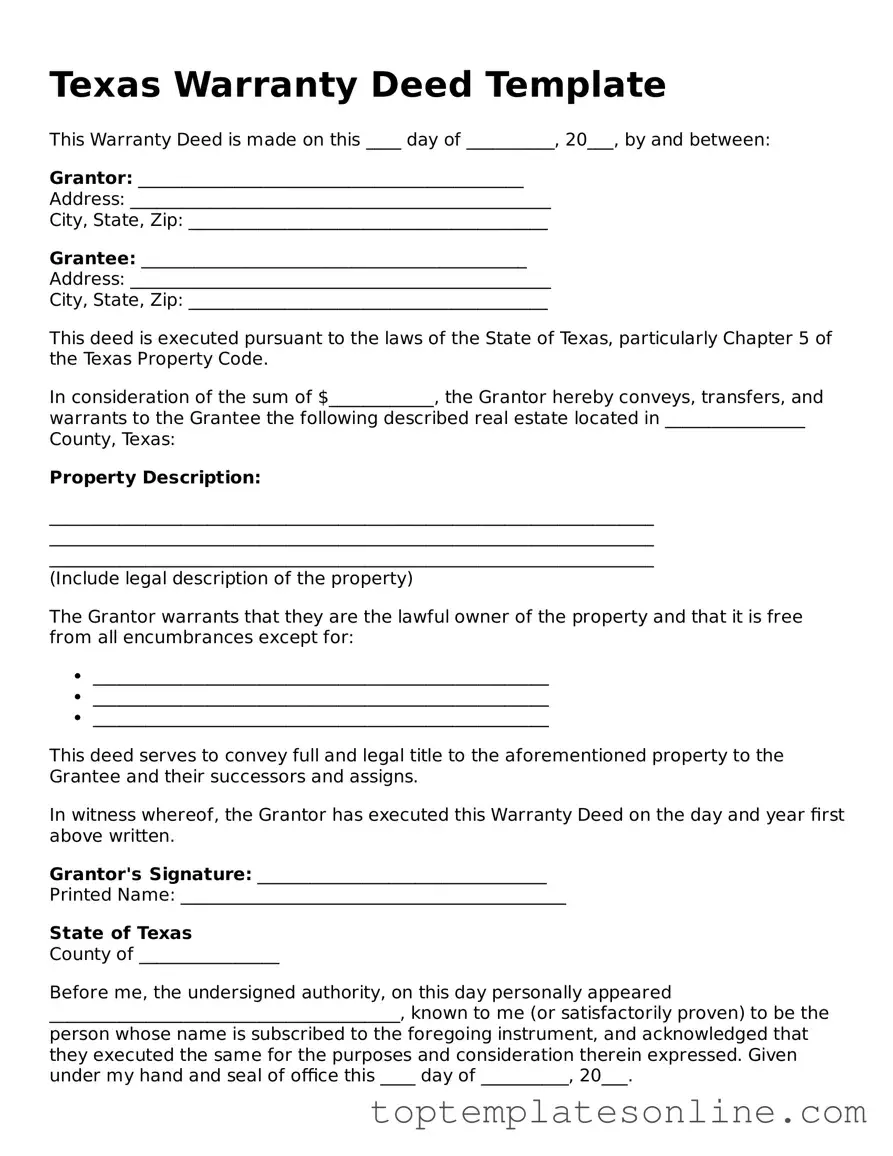The Texas Deed form plays a crucial role in the transfer of real estate ownership within the state, serving as the official document that outlines the legal transfer of property from one party to another. This form captures essential details, including the names of the grantor (the person selling or transferring the property) and the grantee (the person receiving the property), as well as a clear description of the property being conveyed. Additionally, the Texas Deed may specify any conditions or restrictions related to the property, ensuring that both parties are aware of their rights and obligations. Importantly, the form must be signed by the grantor and often requires notarization to validate the transaction legally. Furthermore, the deed is typically recorded in the county where the property is located, providing public notice of the ownership change. Understanding the components and requirements of the Texas Deed form is essential for anyone involved in real estate transactions, as it not only facilitates the transfer of property but also protects the interests of both the buyer and the seller.
